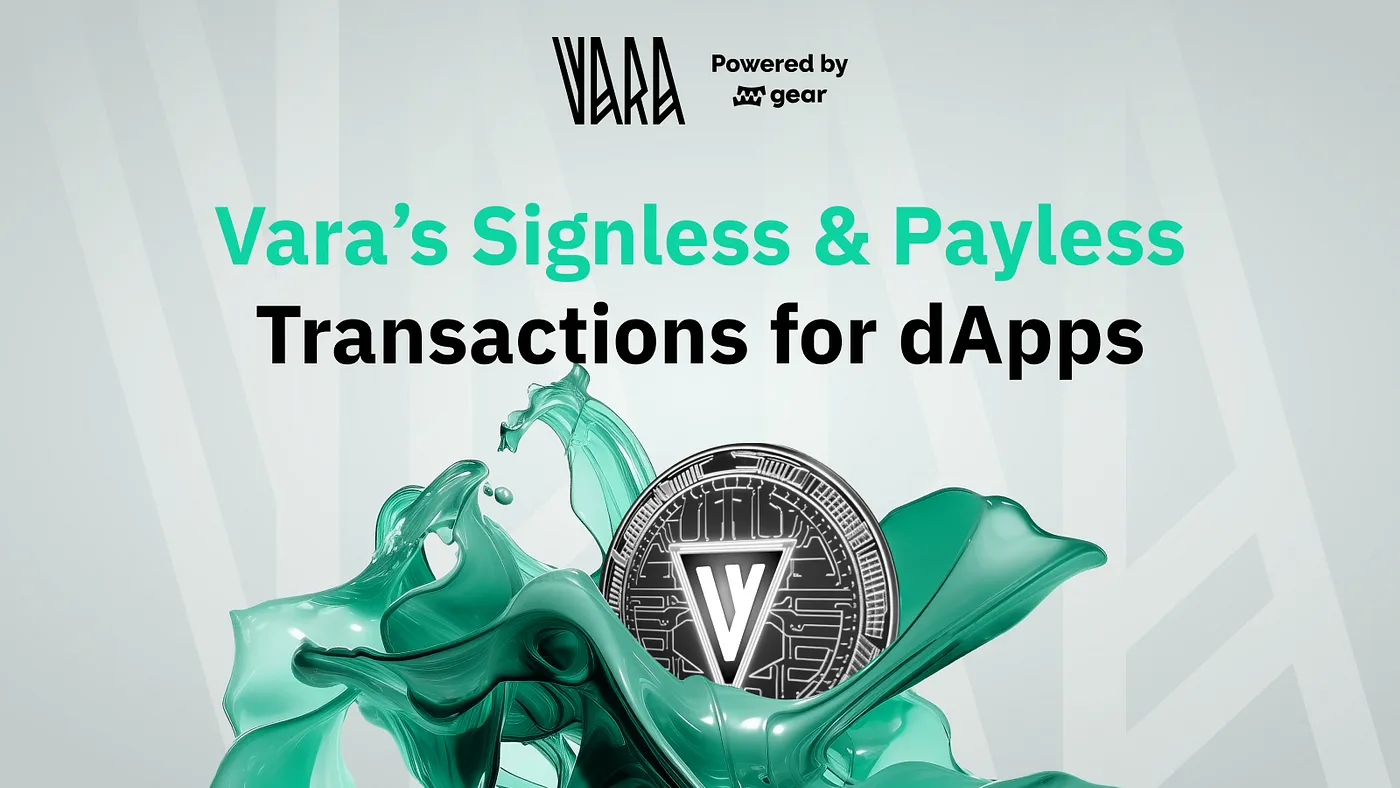Back
Gasless and Signless Transactions
Vara Network
By HackQuest
Jul 2,20243 min readWelcome to the Web3 world, where digital finance and applications are shown in a revolutionary way through the fusion of blockchain technology, cryptocurrencies, and a pioneering spirit. Are you overwhelmed by the wealth of terms in the Web3 world that you don’t understand? Are those slang barriers for you to learn about Web3? Don’t worry! We’re here to explain the obscure terms to guide your learning. Today, we're diving into an innovative development in the world of Web3: [Gasless and Signless Transactions].
Definition and Overview
Gasless and Signless Transactions are pioneering features introduced by the Gear Protocol, aimed at transforming the user experience within decentralized applications (dApps). Gasless transactions allow users to interact with blockchain applications without incurring gas fees, while signless transactions enable seamless interactions without the need for repeated digital signatures. Together, these features make dApps more accessible and user-friendly, aligning their usability with traditional Web2 applications.

Source: Medium
Technical Composition
At the core of Gasless Transactions lies the concept of vouchers. These vouchers are issued by actors within the Gear-powered network, granting specific users the ability to send messages to designated programs without paying gas fees. Each voucher includes a predetermined gas allocation, ensuring that transaction costs are covered. Signless Transactions, on the other hand, utilize temporarily created sub-accounts that hold the rights to sign transactions on behalf of the user, eliminating the need for constant user authentication.
Core Functions
Voucher Issuance
Actors within the network can issue vouchers, creating a sponsorship mechanism for users. These vouchers are tied to specific programs and include a designated gas allocation.
Message Sending
Holders of valid vouchers can send messages to the designated program, including instructions or data, thus enriching interactions within the network.
Gas-Free Interactions
Users with valid vouchers can enjoy gas-free interactions, with the allocated gas from the voucher covering the transaction costs.
Signless Interactions
Signless transactions operate similarly but involve a temporarily created sub-account. This sub-account is granted temporary rights to sign transactions on behalf of the user, enabling interaction with dApps without the need for constant signing.
Use Cases
A prime example of these features in action is the Battleship game. Users without tokens in their balance can still interact with the game by using a voucher. This allows them to send messages and play without needing to sign every transaction or worry about gas fees. Other potential use cases include anonymous voting systems, where signless transactions enhance privacy and security, and health data contributions for research, where users can maintain their anonymity.

Source: Medium
Importance in the Web3 Ecosystem
The introduction of Gasless and Signless Transactions by Gear Protocol is a significant milestone in the Web3 ecosystem. By removing the barriers of gas fees and repetitive signing, these features enhance the accessibility and usability of dApps, encouraging broader adoption of decentralized technologies. This aligns the user experience more closely with Web2 standards, making it easier for newcomers to engage with blockchain applications.
User Experience and Innovations
Gasless and Signless Transactions significantly improve user experience by simplifying interactions with dApps. By eliminating the need for users to manage gas fees or repeatedly sign transactions, these features reduce friction and streamline the user journey. This innovation makes decentralized applications more appealing and accessible, attracting users who might otherwise be deterred by the complexities of token management.
Source: Medium
Challenges
Despite their advantages, Gasless and Signless Transactions do come with challenges. The issuance and management of vouchers require a robust framework to ensure security and prevent abuse. Additionally, the temporary sub-accounts used in signless transactions need to be managed carefully to avoid unauthorized access and ensure user trust.
Conclusion
Gasless and Signless Transactions represent a significant advancement in the Web3 space, making decentralized applications more user-friendly and accessible. By leveraging vouchers and temporary sub-accounts, these features remove the traditional barriers associated with blockchain interactions, such as gas fees and repetitive signing. As the Web3 ecosystem continues to evolve, innovations like these will play a crucial role in driving adoption and enhancing the overall user experience.